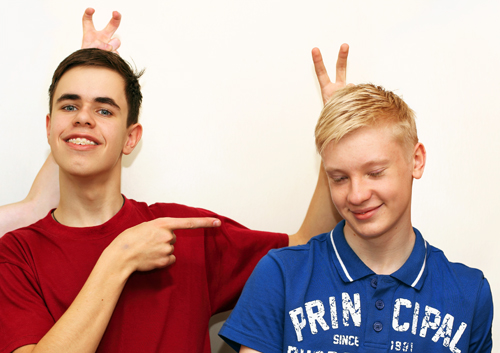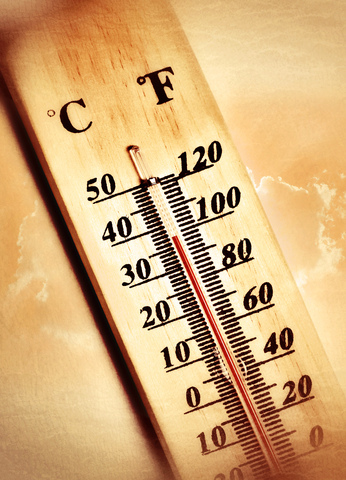June 25th, 2015

Brace-ism: believe it or not, it’s a concept. The Urban Dictionary defines brace-ism as “acting mean to people who have braces on their teeth.” Phrases like metal mouth, brace face, and train tracks are common jokes uttered by gap-toothed fools who like to make fun of people with braces.
While ignoring these comments and taking the high road is the best thing to do, there’s nothing wrong with having a few clever retorts and quick-witted comebacks up your sleeve.
- The next time someone calls you train tracks, break into an obnoxious train imitation, with lots of toot-toot and chuga-chuga-chuga. Finish off your crazy locomotive impersonation with some sort of deafening train horn. That’ll keep the bullies at bay.
- “It’s better to be a brace face than a space case.”
- Counter with a ridiculously childish joke that makes the schoolyard tormentor feel even smaller than he already is. “Oh. Yeah. Why did the deer need braces? Because he had buck teeth. Hahaha.” Top it off with an exaggerated eye roll.
- “Yeah, my brother tells that joke. He’s six. You guys should hang out.” That’ll stop the haters dead in their tracks. Or would that be train tracks?
- Here’s one from the sarcasm grab bag. “Well, I’m just glad there’s a way to fix what’s wrong with my face.”
- “I can’t wait to discuss this formative moment at our ten-year class reunion, when my teeth are razor-straight and you’re wearing adult braces.”
June 18th, 2015

You may have noticed that kids seem to be getting braces and other orthodontic care a lot earlier these days. There was a time, only a decade or two ago, when braces were mainly seen on teenagers, but that is beginning to change. If you’re wondering when to bring your child to our Peoria, AZ office for an orthodontic evaluation, the answer actually has several parts.
The Telltale Signs
If your child has a very crowded set of adult teeth coming in, or if the permanent front teeth came in very early, these are signs that your child should see Dr. Thomas Shipley, regardless of age.
The Dental Age
Barring signs of trouble or early adult teeth as mentioned above, the time that your child needs to be seen for initial orthodontic evaluation depends not so much upon your child’s actual age, but on what is known as a “dental age.”
The dental age of the patient might be entirely different from his or her actual chronological age; for example, an eight-year-old could have a dental age of 13. It is part of Dr. Thomas Shipley and our staff’s job to determine the dental age and then make appropriate recommendations for the resolution of orthodontic issues if they are emerging.
The Official Recommended Age
The American Association of Orthodontists officially recommends that kids should see an orthodontist for the first time between the ages of seven and nine. Even if the child does not have all his or her permanent teeth, the teeth growth pattern can usually be predicted quite effectively by an orthodontist.
This allows for a proactive response to emerging problems, and this is the reason that some younger children are now getting orthodontic devices earlier in life. If a young child has serious orthodontic issues emerging, Dr. Thomas Shipley can usually address the problems immediately and then follow up with another round of treatment when the child has all the adult teeth.
June 11th, 2015

Kids can be picky eaters. How many times have you seen your child try to hide the peas under a mound of mashed potatoes?
At Shipley Orthodontics, Dr. Thomas Shipley and our team understand how hard it can be to get your child to eat the recommended daily allowance of fruits and vegetables. The task of providing fun, nutritious meals becomes even more challenging if he or she wears braces. It's an age-old saying that breakfast is the most important meal of the day. These five braces-friendly recipes are not only nutritious, but they will have little Jimmy flashing his “tin grin” when he sits down at the kitchen table in the morning.
- Scrambled eggs are soft and easy to eat if you have braces. If you drown them in ketchup (which many kids love to do), eggs become even mushier. Minimal chewing is required, and that’s the key to a braces-friendly recipe.
- A healthy breakfast provides energy and jump-starts metabolism. A smoothie is not only a good source of fruit, but it’s also gentle on braces. More importantly, smoothies are fun to create. You can toss anything in the blender (bananas, mangoes, strawberries, spinach) and create a drink that’s loaded with vitamins and antioxidants.
- If you wear braces, eating crunchy cereals or granola for breakfast is out of the question: Bite down the wrong way and you might snap the wires or dislodge the brackets. However, you can get your grains and oats by substituting oatmeal for cereal. This mushy breakfast treat has a host of health benefits.
- Pancakes are not the healthiest breakfast choice. Still, this Sunday morning favorite is braces-friendly. The idea is to make it healthier by hiding blueberries in the pancake batter just like your child hides peas in the mashed potatoes.
- Toast with jam is ok, but skip slathering peanut butter on the bread. If you have braces, the general rule of thumb is to steer clear of foods that are hard or chewy. These types of foods can break wires. Of course, most kids will agree that toast isn’t the most exciting breakfast recipe. Make it a Pop-Tart instead!
For more braces-friendly recipes, please give us a call at our convenient Peoria, AZ office!
June 4th, 2015

The dog days of summer are upon us, and with the temperatures soaring, our team at Shipley Orthodontics wants you to be extra careful about sun safety when you’re out and about. Check out this incredibly helpful article on the Ten Summer Safety Tips for Kids, courtesy of Discovery.
Dr. Thomas Shipley and our team also encourage you to always have a bottle of water handy when heading out into the sun.
We hope you’re having a great summer! Let us know what you're up to below or on our Facebook page!





 Website Powered by Sesame 24-7™
Website Powered by Sesame 24-7™